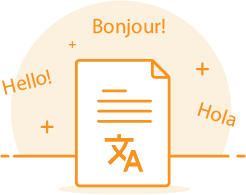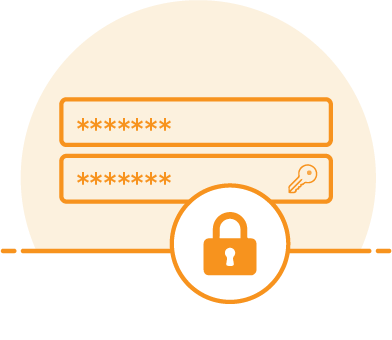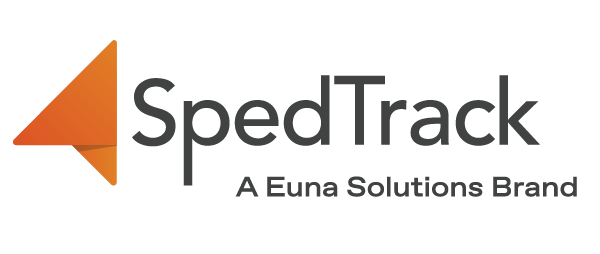What Are IEP Violations?
An Individualized Education Program (IEP) is a written document for students with difficulties that have been evaluated and are eligible for special services. It is a plan of action for assisting eligible students with specially-designed education programs and instruction—including special education and related services.
A school’s failure to comply with its obligations as detailed in the student’s IEP may result in an IEP violation.
IEP violations are actions or lack of action by a school or district that interfere with a student’s right to free and appropriate public education (FAPE). In other words, IEP violations are practices by schools that prevent eligible students from receiving the special education they are legally entitled to.
IEP violations can take many different forms. For example, a school might fail to provide an appropriate education program for a student with special needs or refuse to allow parents to be involved in their child’s education process.
This article will go through the two types of IEP violations and dive deeper into some examples.
Procedural Violations
The first type of IEP violation is procedural.
A procedural violation happens when the school fails to properly implement procedural process requirements under the Individuals with Disabilities Education Act (IDEA).
Procedural violations don’t impact the substantive content and obligations in an IEP—such as special education and related services. They focus more on compliance issues and lack of adherence to procedural requirements.
Special education software solutions, like SpedTrack, excel at alerting and reporting users of current and potential compliance issues throughout the IEP process using SpedTrack’s Compliance Checker.
Failure to Attend IEP Team Meetings
The presence and participation of all relevant stakeholders in the IEP process are essential in creating an effective IEP.
The relevant stakeholders—or the IEP team—typically include the child’s teachers, parents/guardians, school administrators, professionals working with the student, specialists who can address the child’s unique needs, and any other individuals that the parents have invited.
The IEP team is required to meet at least annually to discuss the student’s progress and make necessary changes to the IEP.
If a parent or any other stakeholder fails to attend an IEP team meeting, it can cause delays and disrupt the progress of the IEP process. The school must make reasonable efforts to ensure that all participants can attend meetings. They need to provide meeting notices in advance and schedule meetings at convenient times for parents.
If a parent or stakeholder fails to attend a meeting, the school can proceed if certain criteria are met.
Special education software solutions, like SpedTrack, provide meeting notifications and a place to log meeting notes, results, and next steps, all in one centralized location.
Failure to Implement IEP Process
If a school does not follow the required steps to create an effective Individualized Education Program, it is deemed a procedural violation.
Some examples of failing to go through the entire IEP process include the following:
- Failure to convene an IEP meeting on time
- Inability to create an IEP team with enough representation and composition
- Failure to have measurable IEP goals in the plan
- Failure to conduct evaluations on the child’s eligibility for services
- Failure to provide parents or specialists with a copy of the IEP or progress reports
- Failure to inform or provide prior written notice to parents of changes to an IEP or the IEP team before modifying the IEP
- Not facilitating a due process hearing upon parent requests
- Not meeting any deadlines or critical timelines, i.e., convening an IEP
- Rejecting a potential educational placement unilaterally
Special education software solutions, like SpedTrack, help prevent compliance issues by alerting the user of things like out-of-compliance timelines, missing documentation, forms missing important information, and other possible issues.
Failure to Observe Parent’s Right to Participate in IEP Development
IDEA requires school districts to involve parents in the process of creating an IEP for their children. This includes holding IEP meetings and allowing parents to have input in their child’s education.
It is considered a procedural violation when a district fails to observe this requirement.
Some examples include the following:
- Failure to observe parents’ rights to participate in IEP may include not advising or allowing them to invite individuals who they believe have strong advocacy for their child
- Not notifying the parent before applying changes to the student’s IEP
Special education software solutions, like SpedTrack, help document the parent’s involvement in the IEP process as well as collect digital signatures from the parent/guardian on key forms and documents throughout the process.
Substantive Violations
Substantive violations are breaches of the Individuals with Disabilities Information Act with a significant impact on the substantive content of the IEP—thus getting in the way of providing educational benefits for the student.
Substantive violations can involve the IEP team’s failure to provide services that don’t meet the student’s needs or in the least restrictive environment (LRE). They can also include situations where the Local Education Agency (LEA) fails to provide FAPE to the student.
Software solutions like SpedTrack provide error-checking features that seek to alert and remind the user of critical milestones and important dates in the IEP process.
Failure to Accurately Assess Child’s Needs
The child’s IEP ensures that they receive a customized education program that meets their unique needs. This requires an accurate assessment of the child’s abilities and disabilities.
If the public school fails to assess the child’s needs accurately, they may not provide the appropriate services in the IEP. This can result in a child not receiving the proper education, which violates IDEA.
Examples of this substantive violation include the following:
- Failure to assess the child’s needs—academic and functional alike
- Failure to conduct a complete evaluation
- Failure to obtain written parental consent for additional assessment
- Failure to determine eligibility under IDEA
With special education software, like SpedTrack, an IEP cannot be “activated” or approved without the solution scanning for possible compliance errors and will notify the user if any are found.
Failure to Develop IEP Goals
Failure to develop IEP goals can be a substantive violation of IDEA.
The IEP process begins with an evaluation to determine the student’s needs for support. This information is used to create a draft IEP which is then discussed and revised at the IEP meeting.
The IEP team then defines challenging, ambitious, and measurable annual IEP goals for the child. The goal development process should involve parents, educators, and anyone else working with the student.
If the district does not follow the proper procedures and does not develop appropriate IEP goals, it is deemed a substantive violation.
Examples of this substantive violation include the following:
- Failure to evaluate and assess the child’s needs
- Inability to define annual goals hinged on the student’s needs
- Failure to develop IEP goals that are specific, measurable, attainable, relevant, and time-bound (SMART)
- Inability to create challenging, ambitious, and measurable annual IEP goals as defined by IDEA
Most special education software solutions provide a simple interface that allows the user to enter goals. However, writing SMART goals can be very difficult. SpedTrack alleviates that pain by providing an interactive goal builder and goal library functionality to make goal writing a breeze.
Failure to Monitor Student’s Progress
A district’s failure to adequately monitor a student’s progress can be a substantive violation of the IDEA.
Schools and districts must ensure that proper procedures are in place to monitor a student’s progress and that appropriate personnel is assigned to carry out these duties.
Suppose a district fails to monitor a student’s progress properly; in that case, the district will not be able to prove that the student is making meaningful progress—deemed a denial of FAPE.
Examples of this substantive violation include the following:
- Failure to provide regular and timely progress reports
- Inability to conduct reevaluation at least every three years
- Failure to perform reevaluation upon parent requests
With progress monitoring software, like SpedTrack, a student’s progress is easily tracked and centrally reported providing real-time information on a student’s progress.
Why IEP Violations Matter in Special Education
The US Department of Education oversees the Individuals with Disabilities Education Act (IDEA), ensuring that all children with disabilities receive a free appropriate public education (FAPE).
If a school district fails to follow the provisions of IDEA, it can be held accountable in a district court. Parents who believe their student’s IEP has been violated can file a complaint with their State Department of Education. The US Department of Education also investigates complaints about IEP violations.
Violations of IEPs can severely impact the child’s needs and education. They can prevent students from receiving the special education services they need to succeed in school and can have a severe impact on the student’s future.
IEPs are legally-binding contracts between the school district and the parents. Non-compliance to IEPs—either procedural or substantive—is a violation of this special education law. Consequently, it is in the best interest of both the school district and the student to follow the special education regulations outlined in IDEA and FAPE to avoid a long, costly, and unnecessary lawsuit.
As you can see, using a special education software solution is vital for school districts to remain compliant and to set the student up for success. Next-generation solutions save the IEP team time and allow them to spend their time where it really matters, with the students!
Steer Clear of IEP Violations with SpedTrack
If you’re a school administrator or teacher, it’s essential to be aware of IEP violations and how to avoid them.
SpedTrack is here to help! We offer a comprehensive platform that allows educators to create IEPs and track student progress while staying compliant with all special education laws and regulations.
Request a demo today and see how SpedTrack can help you stay in compliance with federal and state laws while providing the best education possible for your students.

















